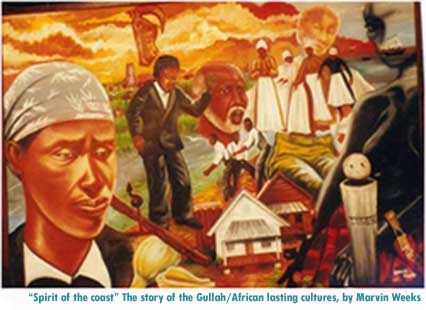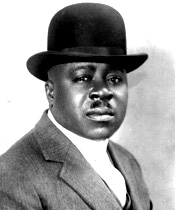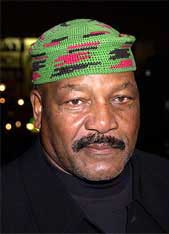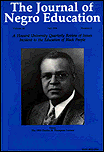COMMEMORATION & SALUTATION - HISTORY


Robert S. Abbott – Chicago Defender. (1868-1940) ) Born in Frederica, St. Simons Island of former enslaved parents, Mr. Abbott, was a Hampton graduate and founder of the – Chicago Defender. He also studied at Kent College of Law. With the restrictions levied by slavery and then racism in the United States, Mr. Abbott was unable to practice law. On May 5, 1905, Mr. Abbott founded the – Chicago Defender, the most influential African American newspaper in the U.S. during the early and mid-twentieth century. The – Chicago Defender's consistent attack on white oppression and lynching of Blacks helped increase the – Chicago Defender's circulation in southern states. Mr. Abbott sent reporters to specifically cover lynchings and the violent application of the Jim Crow laws. The paper protested the treatment of black servicemen and urged the integration of the armed forces. Mr. Abbott's stewardship of the – Chicago Defender lead to it being described as the "most militant Negro newspaper." It fully supported the demands of the Resolution adopted at the second Niagara Conference which included: full manhood suffrage, cessation of discrimination in public accommodations, equal enforcement of the laws against rich and poor, against capitalist and labor, against white and black, education of black children. The Niagara resolution concluded with the declaration: "We are men, we will be treated as men, and we shall win." Mr. Abbott and the – Chicago Defender never moved away from their allegiance to the goal of equality and self-determination. In the 1930s, Mr. Abbott had built an obelisk monument at the Fort Frederica National Monument in memory of his family members. The U.S. Department of the Interior described Mr. Abbott as "one of the most outstanding African American figures of modern history." The SS Robert S. Abbott was launched on April 12,1944. Of the more than 2,700 liberty ships built during World War II, eighteen were named for outstanding African Americans. Mr. Abbott has family members residing on St. Simons Island. The – Chicago Defender is considered to be the "grandfather of the Black Press."Mr. Abbott was a fighter, a defender of rights. He had ideas and expectations; he fought his whole life to help them become a reality. Mr. Abbott created a list of nine goals, of which created the Defender's Bible: (1) American race prejudice must be destroyed; (2) the opening up of all trade unions to African Americans as well as whites; (3) representation in the President's Cabinet; (4) engineers, firemen, and conductors on all American railroads, and all jobs in government; (5) representation in all departments of the police forces over the entire United States; (6) government schools open to all American citizens in preference to foreigners; (7) motormen and conductors on surface, elevated and motor bus lines throughout America; (8) federal legislation to abolish lynching; (9) full enfranchisement of all American citizens.
After searching through several religious communities for an atmosphere free of race prejudice, Mr. Abbott officially joined the Bahá'í Faith in 1934 because of its freedom from such prejudice at the convention to elect its National Spiritual Assembly. The Sea Islands Black Heritage Festival salutes and commemorates the – Chicago Defender's 107th Anniversary.
Abbott's nephew, John Herman Henry Sengstacke served as president following the death of Robert S. Abbott. He took up the mantra of justice in his outrage after the horrific death of Emmet Louis Till, when he sent a wire dated September 1, 1955 to the White House stating the following:
"A Chicago Boy, Emmet Louis Till 14 was kidnapped and
lynched in Mississippi this week, would you let us know if
your office has plans to take any action with reference to
this shocking act of lawlessness."
On September 2, 1955, J. William Barba, Assistant to the Special Counsel to the President, immediately responded,
"We are advised that the Department of Justice has
been in close contact with the development of this case,
but that so far their inquiry has failed to reveal any facts
which provide a basis for Federal jurisdiction or action.
It appears, therefore, that at the present time, the matter
is solely within the jurisdiction of the State of Mississippi.
In the event any basis for Federal jurisdiction does
develop, you may be sure that appropriate action will be
taken."
Like Sengstacke's uncle, Robert S. Abbott, Sengstacke's contributions extended beyond the publishing world. He was involved in community service work in Illinois, and received several Presidential Appointments during the Administrations of Franklin Delano Roosevelt, Harry S. Truman, John F. Kennedy, and Lyndon B. Johnson. He served as the editor-publisher of the Chicago Defender until his death on May 28, 1997, at the age of 84.

Jim Brown was born on St. Simons Island. His diverse achievements are extraordinary; regarded as the greatest running back in the history of football; he is a member of the National Football League (NFL) Hall of Fame and voted the Most Valuable Player of the National Football League in both 1958 and 1965. He was elected to both the Professional Football Hall of Fame and the National Lacrosse Hall of Fame. Mr. Brown was also outstanding academically - named as one of five recipients of the "NCAA Silver Anniversary Outstanding Students of the Past 25 years." Growing out from the roots of St. Simons Island, Mr. Brown remained connected to his people. He, along with other African Americans established the Black Economic Union (BEU). He helped to empower the disenfranchised; he became associated with programs to create jobs for ex-convicts. He founded and became President of the Amer-I-Can Program Inc. - a curriculum that teaches responsibility and self-determination. Mr. Brown's efforts have been felt all over the country.

Charles W. Buggs (1906-1991) ) was a scientist and educator. He was born in Brunswick, Georgia. Dr. Buggs conducted special research on why some bacteria (germs) do not react to certain medicines. In several articles, he presented ideas on penicillin and skin grafting, and the value of chemicals in treating bone fractures. In 1944, Dr. Buggs contributed some of the results of this research to the world through twelve studies he helped to write. ?Three years later he wrote an important article on how to use germ-killing chemicals (antibiotics) to prevent and cure certain diseases. He contributed to a better understanding of health and of the human body.
Zachary Cooper, a scholarly historian (Black Settlers in Rural Wisconsin and Coming Together, Coming Apart) on African Americans in Wisconsin, originally comes from Brunswick, Georgia. He moved on to Wisconsin where he received all of his educational degrees from the University of Wisconsin in Madison, including his Ph.D. from the School of Education. Dr. Cooper was motivated to Wisconsin from the scarcity of knowledge about Black people in Wisconsin. His interest spread beyond the research aspect to his strong desire in seeing that Black contributions are taught in the schools. With Wisconsin’s history being a requirement in the fourth grade, Dr. Cooper knew that knowledge of Black people are part of Wisconsin history had to be taught before that grade. Dr. Cooper’s interest in obtaining information about Black people in Wisconsin along with his urgent desire that Black contributions and culture are taught in the schools resulted in his being recognized as both a scholar and a historian on African Americans in Wisconsin. Dr. Cooper was the author of a number of publications. The connection between Dr. Cooper’s scholarship and his consistent stance for equality is reflected in his writings. Dr. Cooper’s research required him to travel extensively into areas in Grant County such as Beetown, Lancaster and Platteville; areas in Vernon County such as the Town of Forest, Hillsboro, LaFarge; and to cities such as La Crosse, Sparta, West Salem, Portage and Milton, where the underground railroad existed.
In May of 2004, Dr. Cooper wrote the following article in The Madison Times:
Although some schools admitted African Americans before 1820, most states either excluded them altogether or established separate schools. Wisconsin was an exception to the almost universal denial of public education to African American children during the early 19th century. Despite attempts by some legislators to even deny entry of African Americans into Wisconsin, the Badger State did not join those states that had adopted exclusion laws. The Wisconsin state Senate in 1862 voted 22 to 5 to reject a bill denying African Americans entry into the state; and a similar bill was defeated again in 1863 by the same body. Wisconsin legislators also refused to entertain or pass laws excluding African American children from public education. No legal barriers to achievement were created by Wisconsin’s state law makers. Wisconsin law was, thus, consistent with the first article of the state’s Constitution, that all citizens of Wisconsin are free and equal.”
According to Dr. Edward Noyes, “the state has kept its borders open to all men that they might achieve whatever goals that their strengths or their weaknesses permitted.”
Ebo Landing. In the history of the resistance and rebellion to slavery the incident at Ebo Landing is a heroic event - a moment of great pride for all who fought slavery on the Sea Islands. Near the mouth of Dunbar Creek on St. Simons Island, there is a section of swampy marshland where some fishermen refuse to cast their lines. In the daytime, it does not look any different from the other vast marshes stretching across Georgia's coastal islands. When night falls, it is said that one can hear a different sound entirely. Swamps are known to make strange sounds at night. If you listen closely, you may hear when sounds like the faint rattling of chains drifting across the marsh. If you think your ears are deceiving you, think again. In 1802-1803Africans from the Igbo group were captured and sold to two plantation owners on St. Simons Island - John Couper and Thomas Spalding. When the enslaved Africans reached St. Simons Island, Chief Oba, turned his back to the cruel slave lands, refused to live in bondage, began chanting, looked into the eye of the sea and glided upon the water until the Chief and many other Ibos were slowly whirling out of sight. H.A. Siebert states, "as the men marched to their death, they chanted in their native tongue: 'The water brought us, the water will take us away.'" Other members of the Igbo followed their chief into the depths of Dunbar Creek. The Igbos (Ibo, Ebo) would not permit their birthright be severed by intruders of the human spirit. "To lose freedom to the proper Igbo is, therefore, a logical equivalent of death. To be enslaved, to be owned by another is to not be. To the Igbo life is the supreme value. They would rather kill themselves than be subjected to slavery." It is also stated that the drowned were among about 75 Igbo, including women and children forced to leave Nigeria on ships bound for coastal Georgia, home to profitable cotton and other plantations that grew food, and material for clothes. Descendants of the nation settled in the St. Simons, Sapelo and other coastal Georgia communities. Similar resistance to slavery by drowning occurred in Belize and Haiti.
First African Baptist Church.The struggle to preserve African culture on St. Simons Island is reflected in the existence of the historic First African Baptist Church established in the year 1859 before the Civil War, making it one of the oldest historic institutions on St. Simons Island. The leader was Reverend Andrew Neal, who served as pastor for twenty-eight years. The first light that shed in the minds of the group of organizers spread with such force that it became a beacon on the hill that summoned men and women to its path. The present church was erected in 1866 with renovations to the front and back in the 1970s. Visitors from around the world attend church services and receive a wonderful experience of soulful gospel music and song at this historical site. This extraordinary two-story building is located in a beautiful antique setting with live oak trees adorned with swaying Spanish moss, not to forget its pyramid roof steeple in the same likeness of an African pyramid; and built by former slaves of St. Simons Island. The people and the community mirror the importance of the very ancient African proverb - "It Takes A Village." This is particularly noted in the care and teaching of the young folk in First African Baptist Church and the churches and communities throughout the Sea Islands. The First African Baptist Church offers Services every Sunday at 11:00a; Sunday School at 9:30a.
Genoa Martin, born in Brunswick, served as assistant director, and director of Selden Park from 1948 to 1985. Martin promoted rhythm and blues and jazz groups performances in Brunswick, including Duke Ellington, Buddy and Ella Johnson, James Brown, Ruth Brown, Cab Calloway, Lionel Hampton, and Bobby "Blue" Bland. Martin also provided radio commentary for Risley High Football games. He was the first African American to host a radio show on WGIG. Genoa Martin Friends of the Historic Selden Park, is a 501(c)3 non-profit organization. Dana Roberts, Chairman and Diane Knight, Vice-Chairman of the GMFHSP, seek donors in order to restore and preserve a rich legacy (Selden Normal and Industrial Institute), as well as to resume cultural and educational events. Ms. Roberts can be reached at danaccs@gmail.com.
Harrington Schoolhouse(two-room school house on twelve surrounding acres of forests and ponds)is the last remaining African American schoolhouse on St. Simons Island, which was built in the early 1920s. The Harrington community, which consists of North Harrington and South Harrington was settled by emancipated slaves. Mrs. Isadora Hunter, a resident, community activist, and one of the students who attended the Harrington School, donated in 2004, her portion of the land to the St. Simons Land Trust for purposes of preserving an important history for the African American community. In the 1990s, pressure by developers caused many African American homes and property in Harrington to be sold for subdivisions. Residents who did not want to sell their homes displayed "Don't Ask/Won't Sell" signs on their property.
The Friends of Harrington School, Inc. is a 501(c) 3 non-profit organization. Its mission is to assist the St. Simons African American Heritage Coalition with fundraising and restoration of the Harrington Schoolhouse. African Americans built the Harrington Grade School for purposes of educating Black children. The St. Simons African American Heritage Coalition is working to restore the schoolhouse and open its doors as a cultural and historical center and museum. For membership information and to learn more about the Friends or the Coalition, visit www.ssiheritagecoalition.org
Neptune Small was born September 15, 1831 and laid to rest August 10, 1907. He was the faithful servant of the Thomas Butler King family of Retreat Plantation. Capt. Henry Lord Page King, enlisted in the Confederate Army and went off to war, Neptune went along. Capt. King was killed in Virginia at the Battle of Fredericksburg. Neptune returned the body of Capt. King to St. Simons Island. After the war, Neptune was given a piece of land. His house was located between the pier and the lighthouse where the big oak trees and picnic tables are. There is a small monument dedicated to him. According to his great-great granddaughter, Diane Cassandra Palmer Haywood,"I'm not sure what happened to that land. Somehow, it got finagled, and the county ended up with the land." Neptune's mother, Sukey, was a nurse at the Retreat Plantation slave hospital, which is today part of the ruins. Neptune, Sr. was a carpenter at the Retreat Plantation. Neptune was among the first to be freed from slavery. Family members continue to reside on St. Simons Island. As of 2008, there are thirty-five living members of the Neptune family. Mr. Neptune was honored and respected by all who knew him. He was laid to rest at the Retreat Burial Ground at the Sea Island Golf Course.
The original RISLEYGRAMMAR SCHOOL received its name from Douglas Gilbert Risley (1838-1882), who arrived in Glynn County in 1866 with the Bureau of Refugees, Freedman, and Abandoned Lands. J.S. Wilkerson was principal of Risley High School.
Susie King Taylor, the daughter of slaves, was born in Liberty County on August 6, 1848. Despite Georgia's harsh laws against the formal education of African Americans, Susie, at about seven years old, attended two secret schools in Savannah, Georgia taught by Black women. In April 1862, many African Americans fled to St. Simons Island. Within days Susie King's educational advantages came to the attention of army officers, who offered to obtain books for her if she would organize a school. She became the first Black teacher for freed African American students to work in a freely operating freedmen's school in Georgia. She taught forty children in day school and "a number of adults who came to me nights, all of whom so eager to learn to read, to read above anything else." She taught there until October 1862. For three years she moved with her husband and brothers' regiment, serving as nurse and laundress, and teaching many of the Black soldiers to read and write during their off-duty hours. In 1866 Susie established a school for the freed children. In 1867 she returned to her native Liberty County to establish another school. In the 1870s Susie traveled to Boston where she remained for the rest of her life, returning to the South only occasionally. After a trip to Louisiana in the 1890s to care for a dying son, she wrote her Memoirs, which were privately published in 1902. Susie died ten years later.
Before the Civil War, St. Simons had fourteen plantations, ranging in size from a hundred to three thousand acres and with thousands of enslaved Africans. With the Civil War, the plantation owners abandoned St. Simons. The enslaved population remained and many of the men joined the United States Army enlisting in what became the Army's first African American regiment. After the War and the return of the owners and former slaves, the imprint of the slave economy remained - the owners had their plantations, the former enslaved people had nothing. Confronted with a past of 250 years of slavery and a current deprivation of resources, the African Americans undertook to revitalize their society: bought land, cultivated new crops, became business owners, developed an educational system, nurtured their communities with unconditional love and taught the enjoyment of life on the Sea Islands. This comprehensive effort to build a society embodying the values and experiences of African and African American people continues to this day.
There are many names (past and present) of heroic members of the community who have not received accolades and salutations; however, they are very much appreciated for their valiant effort in maintaining the dignity, courage and culture of their African heritage.

